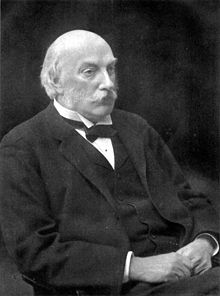Argon
![]()
The title of this article is ambiguous. For other meanings, see Argon (disambiguation).
Argon (ancient Greek ἀργός argós "inactive, inert") is a chemical element with the symbol Ar (until 1957 only A) and atomic number 18. In the periodic table it is in the 8th main group or the 18th IUPAC group and therefore belongs to the noble gases. Like the other noble gases, it is a colorless, extremely inert, monatomic gas. In many properties, such as melting and boiling point or density, it stands between the lighter neon and the heavier krypton.
Argon is the most common noble gas on Earth, making up about 0.934% of the atmosphere. This makes argon the third most abundant component of the Earth's atmosphere, after nitrogen and oxygen. This is largely due to the decay of the potassium isotope 40K, which produces 40Ar.
Argon was the first noble gas to be discovered and extracted as a substance, hence the name, which basically fits any noble gas. Helium (from the Greek helios for "sun") had previously only been detected spectroscopically in sunlight and in terrestrial samples, and neon was only discovered later. Argon was found in 1894 by Lord Rayleigh and William Ramsay through fractional distillation of liquid air. As the cheapest noble gas, argon is used in large quantities as a shielding gas, for example in welding and in the production of some metals, but also as a filling gas for incandescent lamps.
History
The first hint of argon, which was discovered later, was found by Henry Cavendish, who researched the reactivity of air in 1783. He produced electrical discharges in a certain quantity of air enriched with oxygen in a ratio of 5:3. Nitrogen and oxygen reacted with each other and the resulting nitrogen oxides were washed out. This always left a small residue of unreacted gas. However, Cavendish did not realize that this was a different element and did not continue his experiments.
After John William Strutt, 3rd Baron Rayleigh had determined the density of nitrogen isolated from air in 1892, he noticed that nitrogen obtained from ammonia had a lower density. There were various speculations about this finding; for example, James Dewar thought it must be an N3, or nitrogen analogue to ozone. Rayleigh repeated Cavendish's experiments by producing electric sparks in an air-filled glass sphere, causing nitrogen and oxygen to react. After confirming Cavendish's result of an unreactive residue, William Ramsay studied it more closely from 1894 by passing it over hot magnesium. Since magnesium reacts with nitrogen to form the nitride, he was able to remove further nitrogen from the mixture. In doing so, he noticed an increase in density and finally found a previously unknown, inert gas. On 31 January 1895, Ramsay and Rayleigh finally announced the discovery of the new element, which they named argon after the ancient Greek ἀργός argos, "inert". When William Ramsay further investigated argon isolated from the air from 1898 onwards, he discovered three other elements in it, the noble gases neon, krypton and xenon.
The gas found its first technical applications in the electrical industry: Among other things, rectifiers based on the glow discharge in argon were produced, the so-called Tungar tubes.

Lord Rayleigh
Occurrence
Argon is one of the more common elements in the universe, comparable in abundance to sulfur and aluminum. It is the third most common noble gas in the universe after helium and neon. The primordial argon, which is found in the Sun or gas planets like Jupiter, consists mainly of the isotopes 36Ar and 38Ar, while the third stable isotope, 40Ar, is found there only in small amounts. The ratio of 36Ar to 38Ar is about 5.7.
On Earth, however, argon is the most common noble gas. It accounts for 0.934% of the volume of the atmosphere (excluding water vapour), making it the third most abundant atmospheric constituent after nitrogen and oxygen. The composition of terrestrial argon differs considerably from that of primordial argon in space. It consists of more than 99% of the isotope 40Ar, which was formed by the decay of the potassium isotope 40K. The primordial isotopes, on the other hand, are only present in small quantities.
Since argon is formed by potassium decay in the earth's crust, it is also found in rocks. When rocks melt in the Earth's mantle, the argon, but also the helium produced by other decays, outgases. It therefore accumulates mainly in the basalts of the Earth's oceanic crust. Argon is released from the rocks into the groundwater. Therefore, argon is dissolved in spring water, especially when it comes from greater depths.
Questions and Answers
Q: What is argon?
A: Argon is a chemical element.
Q: What is the symbol for argon?
A: The symbol for argon is Ar.
Q: What is the atomic number for argon?
A: The atomic number for argon is 18.
Q: What group does argon belong to?
A: Argon belongs to the noble gas group.
Q: Is argon an odorless and tasteless gas?
A: Yes, argon is an odorless and tasteless gas.
Q: What is the abundance of argon in the Earth's atmosphere?
A: Argon is the third-most abundant gas in the Earth's atmosphere.
Q: Why is argon called "lazy" or "inactive"?
A: Argon is called "lazy" or "inactive" because it does not react with other chemicals.
Search within the encyclopedia